JB Pulu had been great to me whilst I had stayed in Roing (both times) and it was a little sad to leave the beautiful Mishmi Hill Camp. However I knew that if I had stayed on then days would become weeks and weeks would become months. With the permit system employed by Arunachal Pradesh being distinctly unfriendly towards foreign and independent travellers, you have to make the most of your expensive month in this province, so I had to move on.
The sumo arrived just some 30 minutes late and it transpired it was just me and one other customer for half the journey before we picked up an additional two people in Pasagat
. This was great news. Just five people in a Sumo for my eight hour journey instead of eleven would be luxurious.
The beginning of the journey was the notorious part, fording the Dibrang River delta. This vast delta stretched for a considerable proportion of the one hundred kilometres that separated Roing from Pasagat. Whilst the water was low due to the dry winter season, the power of the river during the Monsoon had left tell tale signs. These wide river beds were deserts of rough boulders piled up high, one on top of another. These were very difficult to negotiate in the Sumo 4x4 and these river beds were far bigger and wider than anything I had encountered en route to Roing from Assam. Sometimes someone had tried to build a temporary road along these dry river beds with either sand or other boulders, but usually the driver just had to do his best, and we lurched from side to side crossing these vast boulder strewn beds
.
More than once we could see the Border Roads Organisation (BRO) or KEN (my nickname BROKEN) were trying to build new bridges spanning this delta. Quite often we would pass the remains of unsuccessful previous attempts, sometimes just hanging over the river just waiting for the next monsoon to deal the final blow. Only once did we have to take a ferry. This was three long boats strapped together and powered across the shallows with the 4x4 and a couple of motorcycles precariously perched on top.
All in all the progress was slow, but the views breathtaking and when we did get some respite out of the delta and amongst the forests on the river banks, that was equally fascinating. Pasagat eventually arrived just before lunch and the driver told me the next three or four hours would be plain sailing as we drove into Assam and down the highway before re-entering Arunachal Pradesh again just before hitting the hill top capital of Itanagar.
Itanagar was just one of a succession of hill top towns that we found the lining the border after we crossed over from Assam. It also bore the hallmarks of many monsoon downpours and the town itself was in poor condition with piles of rubbish, lots of dust and plenty of construction dominating the views
. Naturally the state parliament buildings appeared space age and completely out of place amongst the squalor and poverty.
I checked in at the basic but certainly unexciting Blue Pine Hotel just opposite the bus station. The room they gave me was noisy but Indian cleanish although the bathroom advertised its location quickly to the nostrils. It was just for two nights so I wasn't in the mood to change although finding one of my pillows covered in blood stains was somewhat alarming.
I did manage to get a reasonable night’s sleep despite the furniture re-organisation that the tenants in the room above me conducted at night. It was at 5.00am that I was awoken by the most violent rainstorm which continued well into the daylight hours. I had been planning to rush off at 7.30am to the last day of the Nyokum Yullo festival in the centre of town. This Nishi tribal festival is a sort of spring festival for the Nishi tribe and the final day (this day) would involve the Nishi priest’s conducting a rain ritual (that already appeared to have worked) before the sacrifice of a Mithune before its conclusion with the famous “Chain Dance”.
Looking outside I was wondering if any Nishi’s had bothered to turn up
. The rain was bucketing down making a real din on the hotel roof. Nevertheless I contacted my friend Guddi, whom I met last year at the Hornbill. She is an Api Tani guide and I was travelling to meet her in Ziro the following day. She answered the phone at the Nyokum Yullo festival taking place in Ziro and she told me everything was going ahead in Ziro despite the rain. Consequently I decided to rush out of the door.
Actually I could not have arrived at the festival area at a more opportune time. It appears the Minister (from that space age parliament building) had been delayed and was now on his way. Consequently the festival had not started and all the Nishi tribals were still arriving in their festival dress. It was spectacular despite the grey skies and everyone was very welcoming.
The festival ground was somewhat muddy and lined with small cafes and restaurants
. A large section was ringed by a covered seating areas and the minister’s platform had pride of place at the end. In front of this everyone was gathering. The men were dressed in white and cream clothing and shawls with their hair dragged across their heads and folded into a bun. This was secured just above the forehead in a bun with a large hairpin. Some of these were ornate and antique, some were just plastic knitting needles. Behind the bun was a woven reed cap on which was secured the bill of a Hornbill. The older Nishi’s were sporting real Hornbills and the younger ones had wooden replicas, reflecting the change in status of these beautiful birds now they are protected. Behind the birds bills were numerous feathers belonging to a wide variety of birds. Some men had pipes, rice beer cups made from bamboo, numerous necklaces or fantastic turquoise stone earrings. Several had their ‘daos’ (knives), bows and arrows or spears with them. They all looked impressive without exception and there was several hundred. In amongst them were some men wearing stripped black and white clothes and these I was later informed were the priests.
The women were dressed in predominantly white, red or black outfits with colossal necklaces or clumps of necklaces. Some had flowers in the hair, other broaches. All looked great and the combined spectacle of so many tribals was terrific. It was during this that I met Bapu, a friendly local student how started explaining everything.
As soon as the minister arrived and we had experienced the initial welcome speech, the dances kicked off. The first involved just the women with half of them dressed as men complete with fake moustaches. “Men and women are not allowed to dance with each other” explained Bapu. Several dances were then performed by the women. Meanwhile the men paraded next to the Minister’s stand affording me an excellent view and the opportunity to speak with many as they all seemed to speak English. They were just as interested to take my photo as I was to take theirs.
With the rains started to threaten again and clouds of thick mist descending from the mountain tops to fill the festival site it was an unusual atmosphere and one that complimented the animistic rituals. Soon the Mitune was being led onto the ground for its sacrifice and the priests assembled before some bamboo structure. Men also appeared with long bamboo poles to which dead chickens were attached at one end. These were waved like flags frantically as the priests dealt the Mithune. I keep a respectful distance. Strangely I was the only foreigner in amongst these thousands of Nishis.
With the sacrifice over the Chain Dance commenced. Firstly all the women entered the arena in long snakelike line which moved across the festival ground as traditional music was played. This was truly memorable with all the women choreographed to move in sequence whilst the line continued to enter the arena and compacted so everyone could get in. The men lining the perimeter. Next it was the men who entered the festival ground and lined up facing the crowd in one big perimeter line. They each held hands and performing a sort of dance or salute as they worked their way across the ground towards the Minister’s platform. He was quick to join in as they drew near (typical politician). Then as quickly as the event had started, it finished and everyone left.
I really enjoyed Nyokum Yullo and it was great and informative to have been with Bapu. He kindly gave me a lift back to the hotel and we agreed to meet on my return to Itanagar. I though had plenty to get ready for my trip to Ziro the following morning, another 4.30am start.
Nyokum Yullo, Nishi people, ferries, chain dance
Sunday, February 22, 2015
 Itanagar, Arunachal Pradesh, India
Itanagar, Arunachal Pradesh, India
Other Entries
-
90Embroidery, Rogan, Block Printing, Tribes
Dec 1767 days prior Bhuj, Indiaphoto_camera5videocam 0comment 0
Bhuj, Indiaphoto_camera5videocam 0comment 0 -
91Lions, Nitin, Bird Spotting, Sleeper Bus Part 1
Dec 2163 days prior Gir, Indiaphoto_camera6videocam 0comment 0
Gir, Indiaphoto_camera6videocam 0comment 0 -
92Island Life, Portuguese Colony, Christmas
Dec 2559 days prior Diu, Indiaphoto_camera4videocam 0comment 0
Diu, Indiaphoto_camera4videocam 0comment 0 -
93Restaurant Tombs, Mosques, Markets
Dec 2856 days prior Ahmedabad, Indiaphoto_camera5videocam 0comment 0
Ahmedabad, Indiaphoto_camera5videocam 0comment 0 -
94Birds, NYE, Dhows, Feral Dogs, Shaves
Dec 3153 days prior Mandvi, Indiaphoto_camera6videocam 0comment 0
Mandvi, Indiaphoto_camera6videocam 0comment 0 -
95Blue Moon, Salt Flats, Crafts
Jan 0251 days prior Bhujodi, Indiaphoto_camera5videocam 0comment 0
Bhujodi, Indiaphoto_camera5videocam 0comment 0 -
96Calico Musuem, Festival Prep, Street Life
Jan 0647 days prior Ahmedabad, Indiaphoto_camera5videocam 0comment 0
Ahmedabad, Indiaphoto_camera5videocam 0comment 0 -
97Leopards, Shepherds, Turbans and Aristocrats
Jan 1142 days prior Bhenswara, Indiaphoto_camera5videocam 0comment 0
Bhenswara, Indiaphoto_camera5videocam 0comment 0 -
98Birds, Fog, Bad Internet, Old Friends
Jan 1439 days prior Jodhpur, Indiaphoto_camera7videocam 0comment 0
Jodhpur, Indiaphoto_camera7videocam 0comment 0 -
99Tigers Tigers Tigers Tigers and oh Tigers
Jan 1736 days prior Sawai Madhopur, Indiaphoto_camera6videocam 0comment 0
Sawai Madhopur, Indiaphoto_camera6videocam 0comment 0 -
100Trains, Rodents, Rip offs, Delhi and Gentle
Jan 2528 days prior Delhi, Indiaphoto_camera3videocam 0comment 0
Delhi, Indiaphoto_camera3videocam 0comment 0 -
101Sand, Masks, Forest Man, Monks & Bamboo
Feb 0220 days prior Majuli, Indiaphoto_camera8videocam 0comment 0
Majuli, Indiaphoto_camera8videocam 0comment 0 -
102Julius, Gibbons, Park Fees, Tea & Gymkhana
Feb 0517 days prior Jorhat, Indiaphoto_camera5videocam 0comment 0
Jorhat, Indiaphoto_camera5videocam 0comment 0 -
103Houseboats, Dolphins, Rain and Animal Planet
Feb 1012 days prior Tinsukia, Indiaphoto_camera5videocam 0comment 0
Tinsukia, Indiaphoto_camera5videocam 0comment 0 -
104Tezu family home, TV Mike, Huts, Cows, River Wash
Feb 148 days prior Tezu, Indiaphoto_camera5videocam 0comment 0
Tezu, Indiaphoto_camera5videocam 0comment 0 -
105Sumos, Boulders, Oranges, Idu Mishmi
Feb 175 days prior Roing, Indiaphoto_camera5videocam 0comment 0
Roing, Indiaphoto_camera5videocam 0comment 0 -
106Motorbikes, Idu Mishmi, Hats, Illness, Scenary
Feb 193 days prior Anini, Indiaphoto_camera9videocam 0comment 0
Anini, Indiaphoto_camera9videocam 0comment 0 -
107Nyokum Yullo, Nishi people, ferries, chain dance
Feb 22 Itanagar, Indiaphoto_camera5videocam 0comment 0
Itanagar, Indiaphoto_camera5videocam 0comment 0 -
108Paddies, Plugs, Tattoos, Weddings, Bamboo, Spirits
Feb 242 days later Ziro, Indiaphoto_camera5videocam 0comment 0
Ziro, Indiaphoto_camera5videocam 0comment 0 -
109Post Office, Hari's Help, Tourist Apartheid
Mar 017 days later Guwahati, Indiaphoto_camera3videocam 0comment 0
Guwahati, Indiaphoto_camera3videocam 0comment 0 -
110Hornbills, Eco Lodge, Birds, Elephants & Nameri NP
Mar 039 days later Tezpur, Indiaphoto_camera5videocam 0comment 0
Tezpur, Indiaphoto_camera5videocam 0comment 0 -
111Plans Changing, Bus tyres, early closing museums
Mar 0814 days later Kohima, Indiaphoto_camera2videocam 0comment 0
Kohima, Indiaphoto_camera2videocam 0comment 0 -
112Wildlife, History, Bad Roads, Elephants & Dust
Mar 1319 days later Wokha, Indiaphoto_camera5videocam 0comment 0
Wokha, Indiaphoto_camera5videocam 0comment 0 -
113Wedding, More Dust, Shawls, Tensions and Sumi Food
Mar 2026 days later Zunheboto, Indiaphoto_camera3videocam 0comment 0
Zunheboto, Indiaphoto_camera3videocam 0comment 0 -
114Stones, Inventions, Old Friends and Shop 65
Mar 2430 days later Mokokchung, Indiaphoto_camera5videocam 0comment 0
Mokokchung, Indiaphoto_camera5videocam 0comment 0 -
115Meeting Mr Sosangtemba Longkumer Ao
Mar 2632 days later Longsa, Indiaphoto_camera4videocam 0comment 0
Longsa, Indiaphoto_camera4videocam 0comment 0 -
116Expensive Transport, Rain, Football, Cockroaches
Mar 2834 days later Longleng Nagaland, Indiaphoto_camera3videocam 0comment 0
Longleng Nagaland, Indiaphoto_camera3videocam 0comment 0 -
117Pork, Pigs, Moon Singing, Monsoon, Footy
Apr 0138 days later Wakching, Indiaphoto_camera10videocam 0comment 0
Wakching, Indiaphoto_camera10videocam 0comment 0 -
118Aoling Festival, Rain, Easter, Rain, Rain
Apr 0643 days later Wakching, Indiaphoto_camera10videocam 0comment 0
Wakching, Indiaphoto_camera10videocam 0comment 0 -
119The Not Super Travel Co, Tea, Temples & Bye Byes
Apr 1047 days later Kamakhya, Indiaphoto_camera5videocam 0comment 0
Kamakhya, Indiaphoto_camera5videocam 0comment 0 -
12035c, Haveli, Pink City, Amber Fort, Tigers, Tigers
Apr 1552 days later Sawai Madhopur, Indiaphoto_camera5videocam 0comment 0
Sawai Madhopur, Indiaphoto_camera5videocam 0comment 0 -
121Taj, Baby Taj, carpets, arguments, fever plus 43c
Apr 1855 days later Agra, Indiaphoto_camera5videocam 0comment 0
Agra, Indiaphoto_camera5videocam 0comment 0 -
122Mud, Mangroves, Kingfishers, Boats, Storms, Otters
Apr 2259 days later Sundarbans National Park, Indiaphoto_camera10videocam 0comment 0
Sundarbans National Park, Indiaphoto_camera10videocam 0comment 0 -
123Last Days in Kolkata, Obsolete Passports, Thailand
May 0168 days later Koh Chang, Thailandphoto_camera10videocam 0comment 0
Koh Chang, Thailandphoto_camera10videocam 0comment 0 -
124Getting home, reflections and thoughts
May 1380 days later Bristol, United Kingdomphoto_camera3videocam 0comment 3
Bristol, United Kingdomphoto_camera3videocam 0comment 3

 Itanagar, Arunachal Pradesh, India
Itanagar, Arunachal Pradesh, India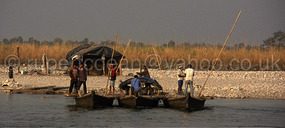
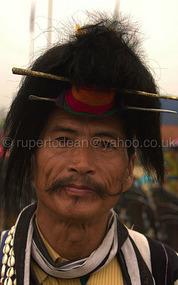
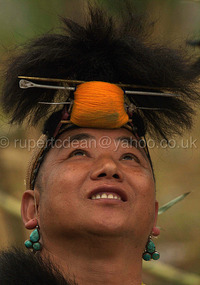
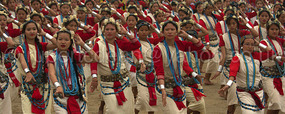
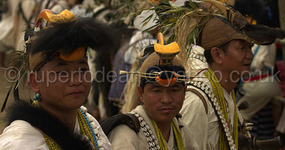



2025-05-22